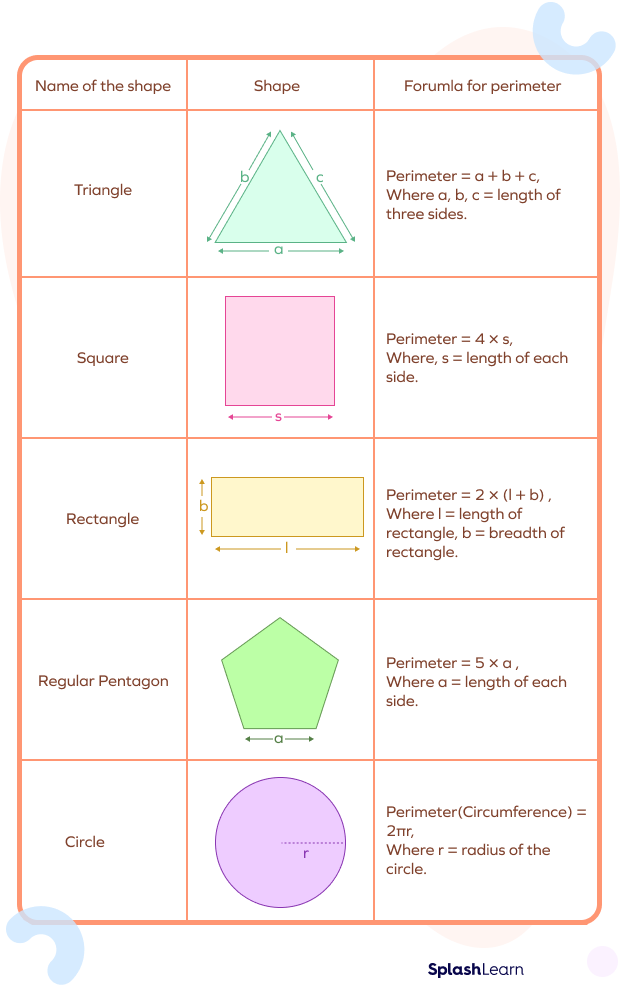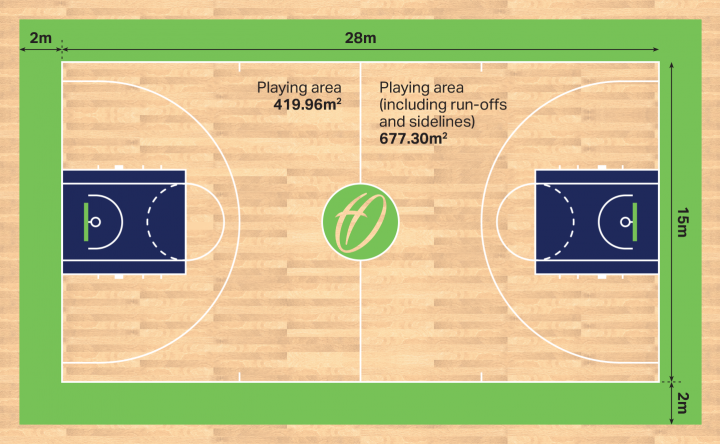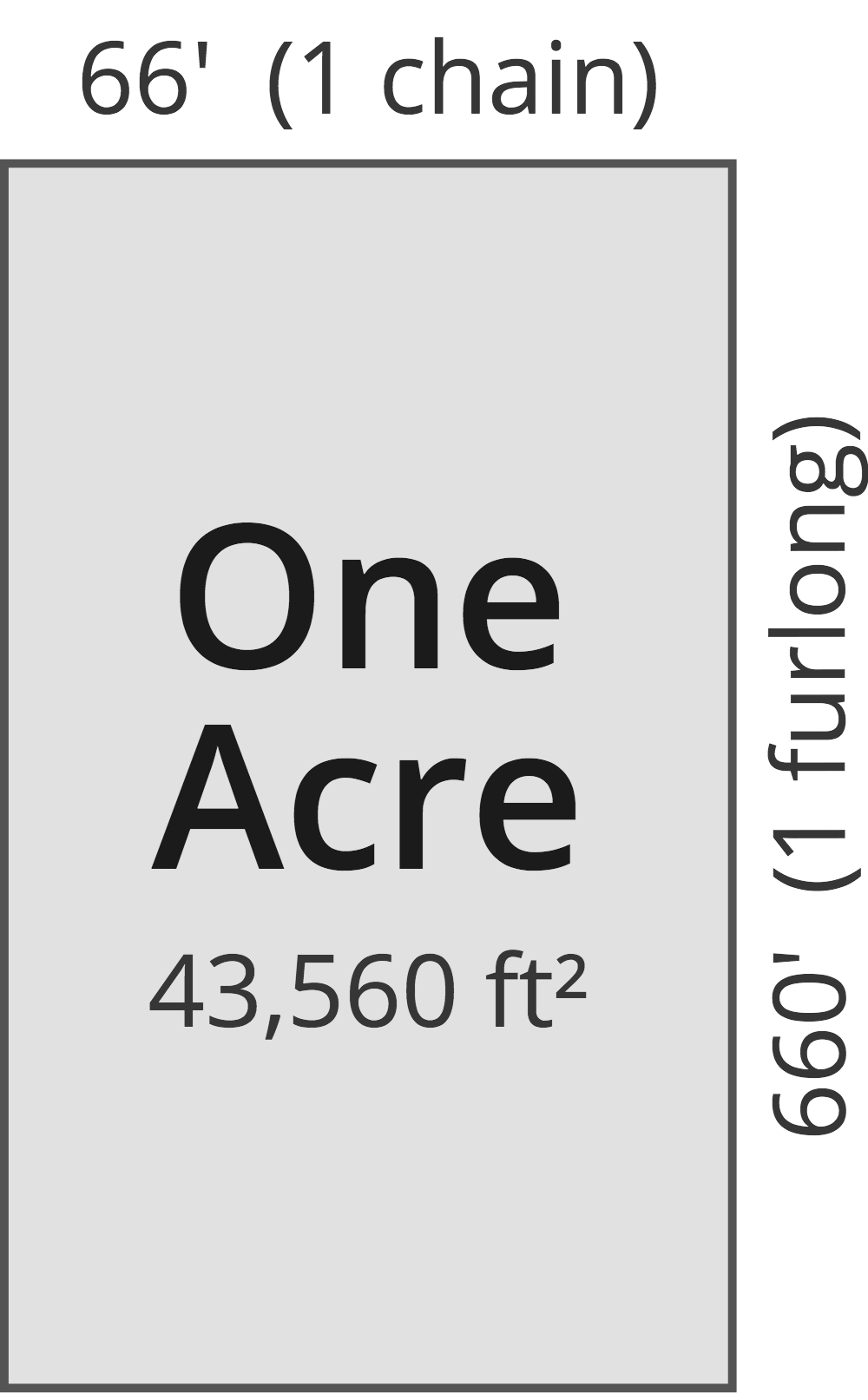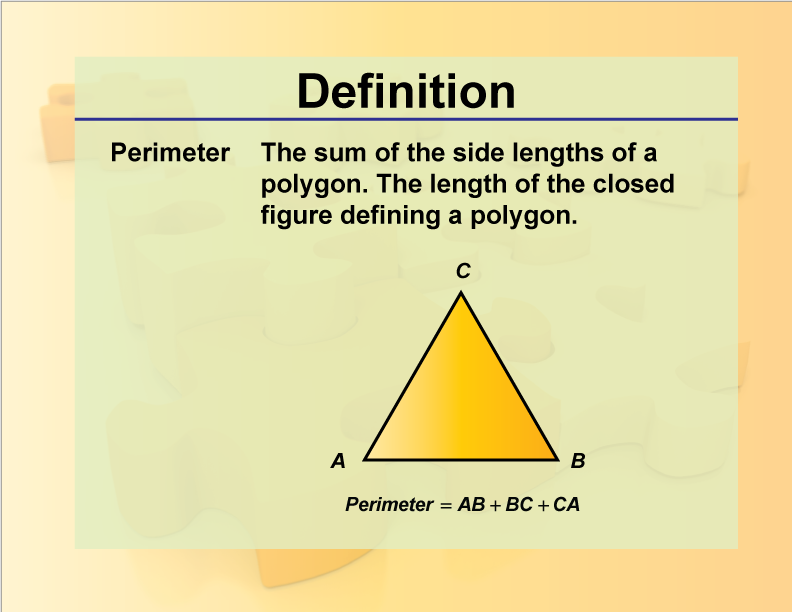Topic unit of perimeter of rectangle: The unit of perimeter of a rectangle is a crucial concept in geometry, helping to measure the total length around the rectangle. This article explores the formula, applications, and practical examples to enhance your understanding and usage of perimeter in various contexts. Dive in to master the perimeter of a rectangle with ease!
Table of Content
- Understanding the Perimeter of a Rectangle
- Introduction to Perimeter of a Rectangle
- Definition of Perimeter
- Formula for Perimeter of a Rectangle
- Units of Measurement for Perimeter
- Derivation of the Perimeter Formula
- Examples and Practice Problems
- Real-World Applications
- Common Mistakes and Tips
- Frequently Asked Questions (FAQs)
- YOUTUBE: How to find the Area and Perimeter of a Rectangle
Understanding the Perimeter of a Rectangle
The perimeter of a rectangle is the total length of its outer boundary. To calculate the perimeter, you sum up all four sides of the rectangle. The formula for the perimeter is:
\[ P = 2 \times (L + W) \]
Where:
- \(P\) is the perimeter
- \(L\) is the length of the rectangle
- \(W\) is the width of the rectangle
Example Calculation
Consider a rectangle with a length of 12 cm and a width of 8 cm. Using the formula:
\[ P = 2 \times (12 + 8) \]
\[ P = 2 \times 20 \]
\[ P = 40 \, \text{cm} \]
Properties of a Rectangle
- It has four sides and four right angles (90 degrees each).
- Opposite sides are equal and parallel.
- The perimeter is twice the sum of its length and width.
Common Units of Measurement
Perimeter is measured in linear units, which can be:
- centimeters (cm)
- meters (m)
- inches (in)
- feet (ft)
Applications
Calculating the perimeter of a rectangle is useful in various real-world scenarios, such as determining the amount of fencing required to enclose a rectangular garden or the trim needed to go around a rectangular window.

READ MORE:
Introduction to Perimeter of a Rectangle
The perimeter of a rectangle is the total length of all its sides. A rectangle has four sides, with opposite sides being equal in length. The formula to calculate the perimeter (P) of a rectangle is given by:
\[ P = 2(l + w) \]
where \( l \) is the length and \( w \) is the width of the rectangle. This formula is derived from adding the lengths of all sides: \( P = l + w + l + w = 2l + 2w \).
To understand this concept better, consider a rectangle with a length of 8 units and a width of 5 units. Using the formula, the perimeter is:
\[ P = 2(8 + 5) = 2 \times 13 = 26 \, \text{units} \]
Understanding the perimeter is essential in various real-life applications such as determining the amount of fencing required for a garden, the length of a border needed for a rectangular art piece, or the amount of material needed to frame a picture.
- Fencing and Property Boundaries: Calculating the perimeter helps in determining the amount of fencing material needed.
- Flooring and Tile Installation: Knowing the perimeter assists in estimating the amount of materials required for flooring or tiling.
- Sports Fields: Accurate perimeter measurement is crucial for planning and marking boundaries in sports fields.
- Art and Design: Perimeter calculations ensure proper scaling and proportioning of artworks on rectangular canvases or frames.
Definition of Perimeter
The perimeter of a rectangle is defined as the total length of the boundary surrounding the shape. It is calculated by adding the lengths of all four sides. Since opposite sides of a rectangle are equal, the perimeter can be found using the formula:
\[ \text{Perimeter} = 2 \times (\text{Length} + \text{Width}) \]
This formula provides a quick and efficient way to determine the perimeter when the dimensions of the length and width are known.
For example, if the length \( l \) of a rectangle is 10 units and the width \( w \) is 5 units, the perimeter \( P \) can be calculated as follows:
\[ P = 2 \times (10 + 5) = 2 \times 15 = 30 \text{ units} \]
The perimeter is a linear measurement and is expressed in units such as meters, centimeters, inches, feet, etc. Understanding the perimeter is essential in various practical scenarios, such as determining the amount of material needed to cover the edges of a rectangular area.
Formula for Perimeter of a Rectangle
The perimeter of a rectangle is the total distance around the edge of the rectangle. It is a linear measure and can be calculated using the lengths of the sides of the rectangle. To find the perimeter, you add up the lengths of all four sides.
Since opposite sides of a rectangle are equal, the formula for the perimeter (P) can be simplified to:
$$P = 2(l + w)$$
where:
- \(l\) is the length of the rectangle
- \(w\) is the width of the rectangle
For example, if a rectangle has a length of 8 units and a width of 5 units, its perimeter can be calculated as:
$$P = 2(8 + 5) = 2 \times 13 = 26 \text{ units}$$
To summarize, the steps to calculate the perimeter of a rectangle are:
- Write down the formula: \(P = 2(l + w)\)
- Substitute the values of the length and width into the formula
- Perform the arithmetic operations to find the perimeter
- Write the final answer with the correct units
The perimeter is a useful measurement in various real-world applications, such as determining the amount of fencing needed for a yard, the border length for a garden, or the frame length for a picture.
Units of Measurement for Perimeter
The perimeter of a rectangle is a linear measurement representing the total distance around the boundary of the rectangle. It is typically measured in standard units of length. Here are the most commonly used units:
- Meters (m): Used in most parts of the world, especially in scientific and engineering contexts.
- Centimeters (cm): Often used in schools and everyday measurements in countries using the metric system.
- Millimeters (mm): Useful for very small objects and detailed measurements.
- Inches (in): Commonly used in the United States for a variety of measurements.
- Feet (ft): Another common unit in the United States, especially for measuring larger objects and distances.
- Yards (yd): Sometimes used in the United States for measuring longer distances or fabric lengths.
To convert between these units, it is important to use the appropriate conversion factors. For instance, 1 meter equals 100 centimeters, 1 foot equals 12 inches, and so on. Understanding these units and conversions ensures accurate calculation and communication of perimeter measurements.
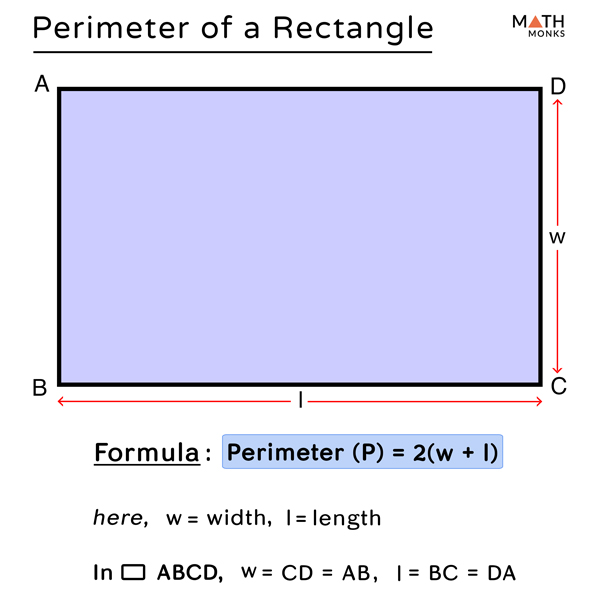
Derivation of the Perimeter Formula
To understand the derivation of the perimeter formula for a rectangle, let's start with the basic properties of a rectangle. A rectangle is a quadrilateral with two pairs of parallel sides that are equal in length, and all four angles are right angles (90 degrees).
The perimeter of any polygon is the total length around its edges. For a rectangle, this means adding up the lengths of all four sides. Let’s denote the length of the rectangle by \( l \) and the width by \( w \).
Since opposite sides of a rectangle are equal, the perimeter \( P \) can be expressed as:
\[
P = l + w + l + w
\]
This simplifies to:
\[
P = 2l + 2w
\]
Therefore, the formula for the perimeter of a rectangle is:
\[
P = 2(l + w)
\]
This formula indicates that the perimeter of a rectangle is twice the sum of its length and width.
Let’s consider an example to illustrate this derivation:
If a rectangle has a length of 5 meters and a width of 3 meters, the perimeter would be calculated as follows:
\[
P = 2(5 \, \text{m} + 3 \, \text{m}) = 2 \times 8 \, \text{m} = 16 \, \text{m}
\]
So, the perimeter of this rectangle is 16 meters.
Examples and Practice Problems
Understanding the perimeter of a rectangle becomes clearer with practical examples. Here are some examples and practice problems to help reinforce the concept.
- Example 1: A bedsheet has a length of 120 inches and a width of 85 inches. To find the amount of lace needed to put around its border, calculate the perimeter.
- Given: Length (l) = 120 inches, Width (w) = 85 inches
- Formula: Perimeter (P) = 2(l + w)
- Calculation: P = 2(120 + 85) = 2 × 205 = 410 inches
- Answer: 410 inches of lace needed
- Example 2: A chocolate bar is made up of equal-sized squares, each side measuring 1 inch. The bar is 6 squares long and 2 squares wide. Calculate its perimeter.
- Given: Length = 6 inches, Width = 2 inches
- Formula: Perimeter (P) = 2(l + w)
- Calculation: P = 2(6 + 2) = 2 × 8 = 16 inches
- Answer: The perimeter is 16 inches
- Example 3: A rectangle has a length of 15 mm and a width of 13 mm. Find its perimeter.
- Given: Length (l) = 15 mm, Width (w) = 13 mm
- Formula: Perimeter (P) = 2(l + w)
- Calculation: P = 2(15 + 13) = 2 × 28 = 56 mm
- Answer: The perimeter is 56 mm
Here are some practice problems to try on your own:
- A rectangle has a length of 10 meters and a width of 5 meters. What is its perimeter?
- Calculate the perimeter of a rectangle with a length of 25 cm and a width of 10 cm.
- If a garden has a length of 20 feet and a width of 15 feet, what is the perimeter?
By practicing these problems, you'll get more comfortable with the concept of the perimeter of a rectangle and how to calculate it using the formula.
Real-World Applications
The perimeter of a rectangle is a fundamental concept in geometry with numerous real-world applications. Here are some practical examples where calculating the perimeter is essential:
- Fencing a Yard or Garden: When planning to install a fence around a yard or garden, knowing the perimeter helps determine the total length of the fence required. For example, if the yard is a rectangle with a length of \(l\) and a width of \(w\), the perimeter \(P\) is calculated using the formula:
- Building Construction: Architects and builders need to calculate the perimeter of rectangular plots and rooms to estimate the amount of materials required, such as baseboards, moldings, and wall framing.
- Sports Fields: The perimeter of rectangular sports fields, such as soccer or basketball courts, is measured to determine the length of boundary lines for proper marking and to ensure compliance with regulations.
- Carpeting and Flooring: When installing carpets or flooring in rectangular rooms, the perimeter measurement helps in planning the amount of material needed for borders and trims.
- Packaging and Material Wrapping: In manufacturing, the perimeter of rectangular objects is used to calculate the amount of wrapping material needed for packaging products securely.
- Road and Pavement Design: Civil engineers calculate the perimeter of rectangular road sections and pavements for efficient planning of construction materials and to ensure proper drainage and layout.
\[ P = 2l + 2w \]
By understanding the concept of the perimeter and its formula, individuals and professionals can apply this knowledge to solve various practical problems efficiently and accurately.
Common Mistakes and Tips
Understanding and calculating the perimeter of a rectangle is fundamental in geometry, but students often make several common mistakes. Here are some tips to avoid these errors and ensure accurate calculations:
- Confusing Perimeter with Area: One of the most common mistakes is confusing the perimeter of a rectangle with its area. Remember, the perimeter is the total distance around the outside of the rectangle, while the area measures the surface covered by the rectangle. The formula for the perimeter is \(P = 2(l + w)\), where \(l\) is the length and \(w\) is the width.
- Incorrect Unit Conversion: Ensure all measurements are in the same unit before performing any calculations. For example, if the length is given in meters and the width in centimeters, convert them to the same unit first.
- Not Adding All Sides: Sometimes, students forget to add all four sides of the rectangle. The correct calculation involves adding both pairs of opposite sides: \(P = l + l + w + w\) or simplified to \(P = 2(l + w)\).
- Misidentifying Length and Width: Clearly identify the length and the width of the rectangle. Typically, the length is the longer side, and the width is the shorter side. However, this can vary based on how the rectangle is oriented.
- Skipping Steps: Always write out each step in your calculations to avoid mistakes. For instance, if you are using the formula \(P = 2(l + w)\), ensure you first find the sum of \(l\) and \(w\) before multiplying by 2.
Tips for Accurate Calculation
- Double-check Units: Before starting, ensure that all dimensions are in the same unit. This avoids conversion errors.
- Use Visual Aids: Drawing the rectangle and labeling the sides can help visualize the problem and prevent mistakes.
- Practice Regularly: Regular practice with different problems helps reinforce the correct steps and improve accuracy.
- Review Common Errors: After completing each problem, review your work to check for common errors, such as missed sides or incorrect calculations.
- Use Technology: When allowed, use calculators or software tools to check your work. These tools can help verify the correctness of your manual calculations.
By being mindful of these common mistakes and following these tips, you can improve your accuracy in calculating the perimeter of a rectangle.

Frequently Asked Questions (FAQs)
Here are some common questions and answers regarding the perimeter of a rectangle:
-
Q: What is the perimeter of a rectangle?
A: The perimeter of a rectangle is the total distance around the edge of the rectangle. It can be calculated using the formula:
\[ P = 2L + 2W \]
where \( L \) is the length and \( W \) is the width of the rectangle.
-
Q: What units are used to measure the perimeter of a rectangle?
A: The perimeter of a rectangle is measured in linear units such as meters (m), centimeters (cm), feet (ft), or inches (in). The units of measurement are the same as those used for the length and width of the rectangle.
-
Q: How do you find the perimeter of a rectangle if only the area and one side length are known?
A: If you know the area (A) and one side length (L or W) of the rectangle, you can find the other side length using the formula for area, \( A = L \times W \). Once you have both side lengths, you can calculate the perimeter using the perimeter formula.
-
Q: Can the perimeter of a rectangle be a negative number?
A: No, the perimeter of a rectangle cannot be a negative number. Perimeter is a measure of distance, and distance cannot be negative.
-
Q: How does changing the length or width of a rectangle affect its perimeter?
A: Increasing either the length or the width of a rectangle will increase its perimeter. Similarly, decreasing either dimension will reduce the perimeter. The relationship is linear, meaning the perimeter changes directly with changes in length or width.
-
Q: Is the perimeter of a square different from that of a rectangle?
A: A square is a special type of rectangle where all sides are equal. The perimeter of a square can be calculated using the formula \( P = 4s \), where \( s \) is the length of one side. This is a simplified version of the rectangle's perimeter formula, applicable when \( L = W \).
How to find the Area and Perimeter of a Rectangle
Math Antics - Perimeter
Finding the Perimeter
What is perimeter of a Rectangle and how to find it? #math #youtube #mathtrick #shorts #learning
Perimeter with Unit Squares
Find Perimeter of Rectangle with Sides Given as Expressions
READ MORE:
